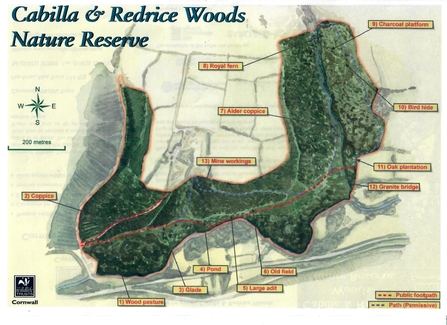*Please Note: Rowena's trip to Cabilla & Redrice Woods took place before the national lockdown was introduced in early January 2021.*
As I drove to Cabilla & Redrice Woods at the edge of the Tamar Valley, all I knew was that my dog and I were visiting ‘one of the largest and possibly finest ancient woodlands in Cornwall’, with river and wetland belts.
It was quite a cold, dull winters day, and so I wasn’t expecting to see the butterflies, the wild flowers, nor the rare Blue Ground Beetle mentioned on Cornwall Wildlife Trust’s website, but there is always wildlife to see.
The satnav took us straight to the site. From the A38 you take a minor road towards Cardinham, cross the bridge over the River Fowey and take the first turning on the right before you get to a wide commercial forestry entrance. The parking area, reassuringly hosting a Cornwall Wildlife Trust van, was by a sawmill yard. The nature reserve’s name was on a gate, and beyond was a wide, muddy track and a grassy, leafy track forking left. As this was my first visit, I took the main track, glad of my wellies, with the dog close by as always.




